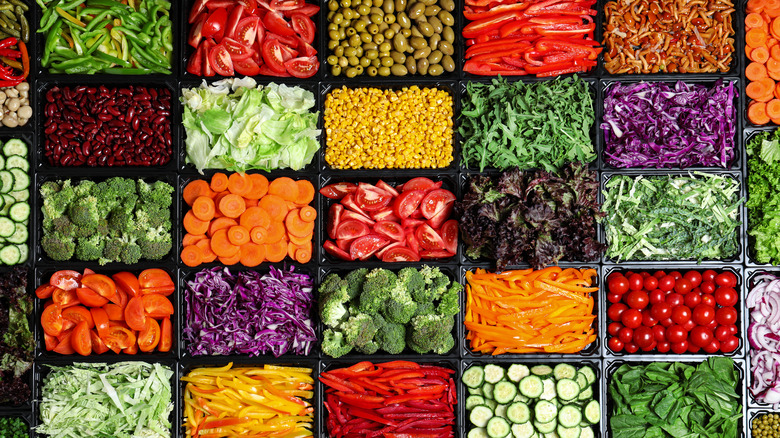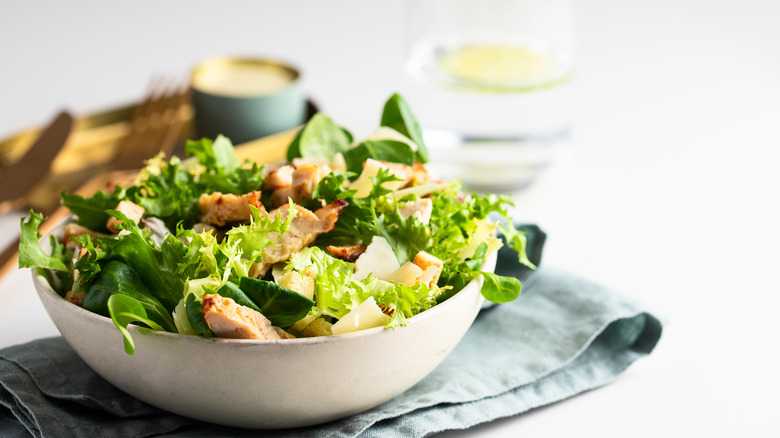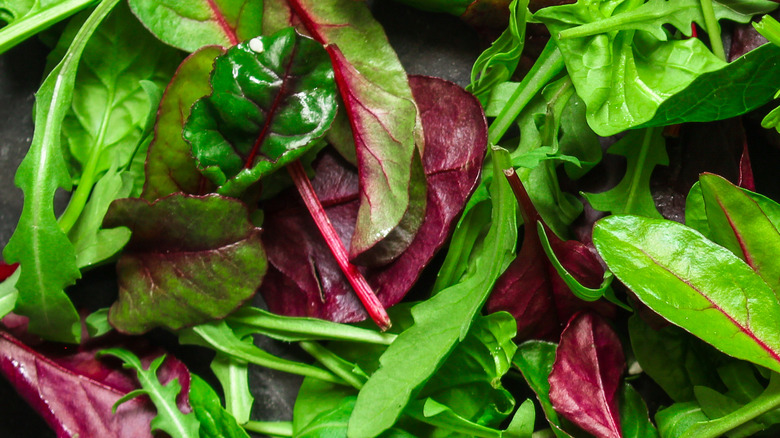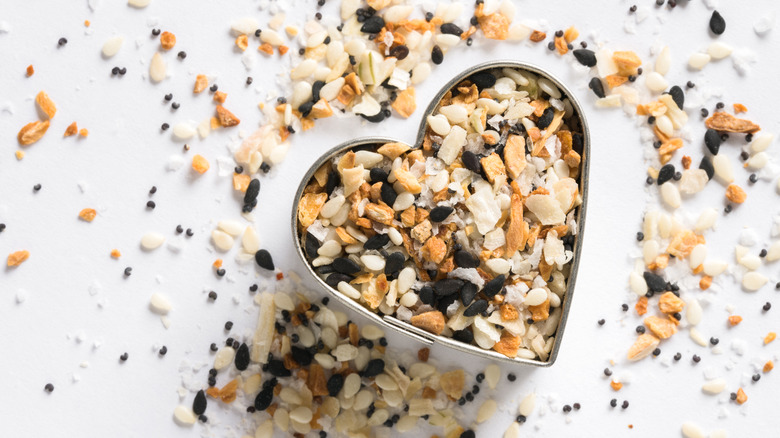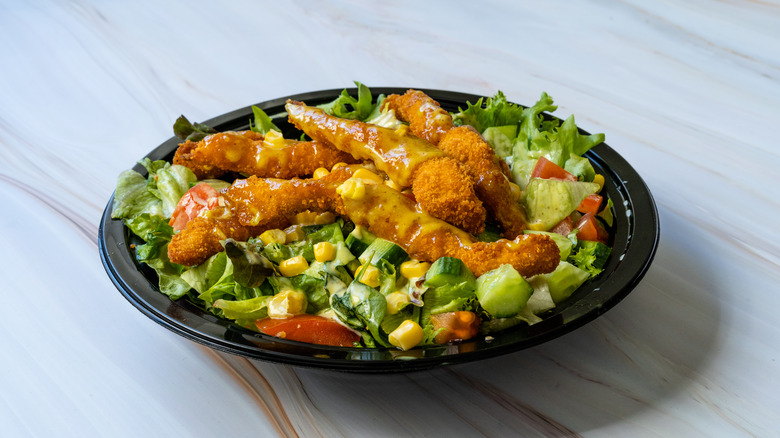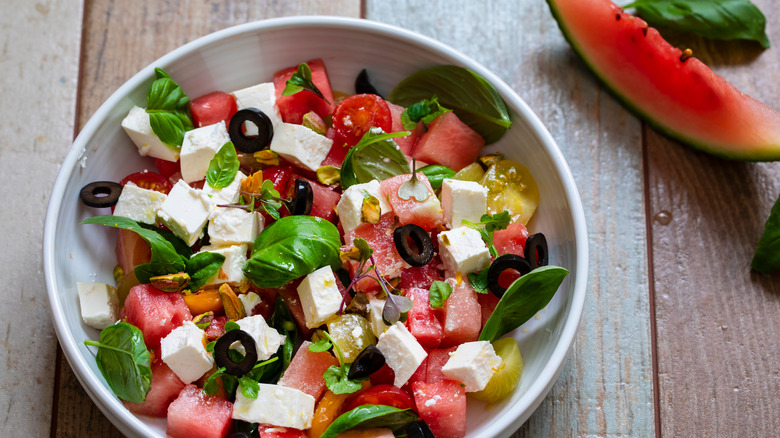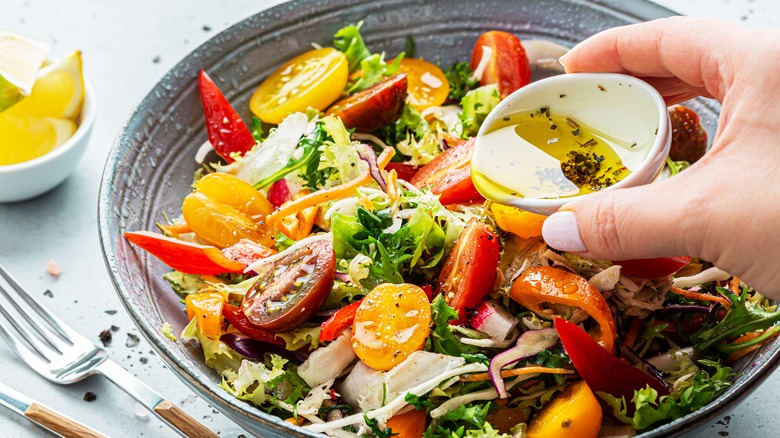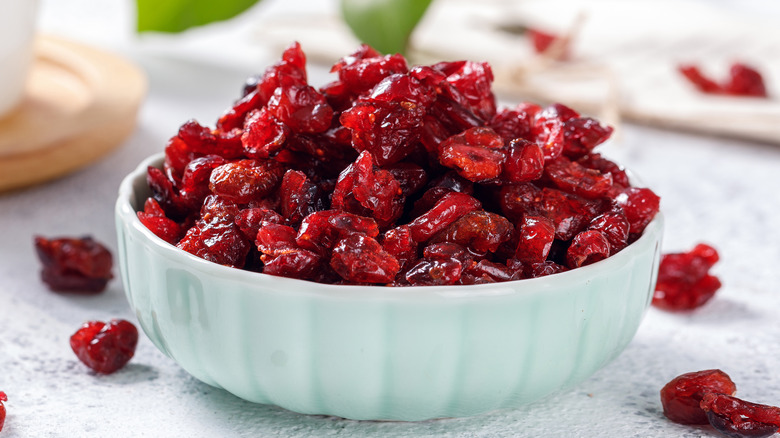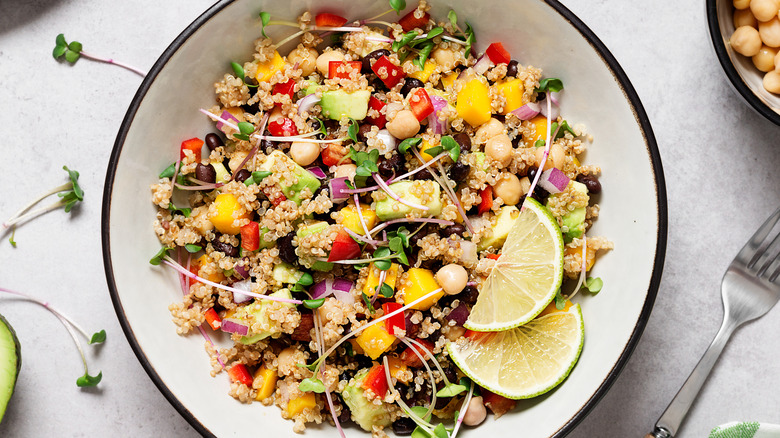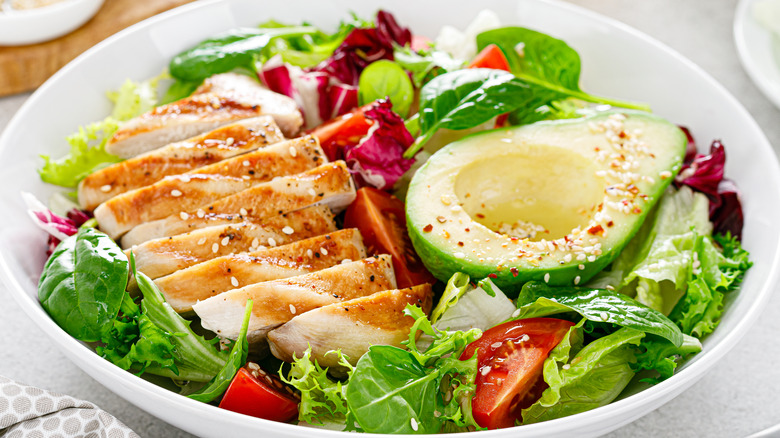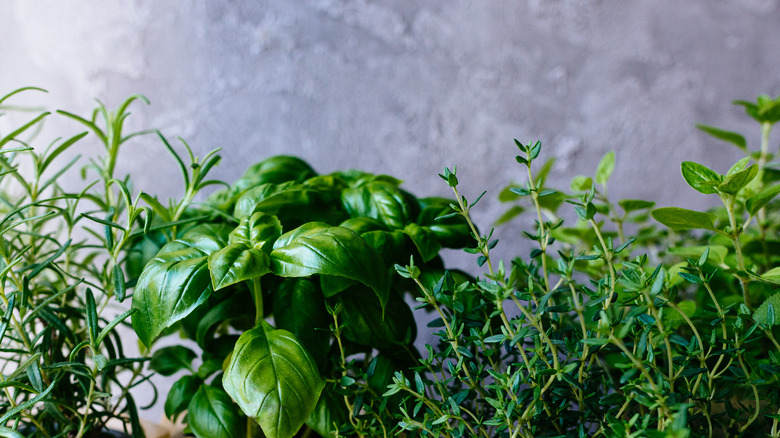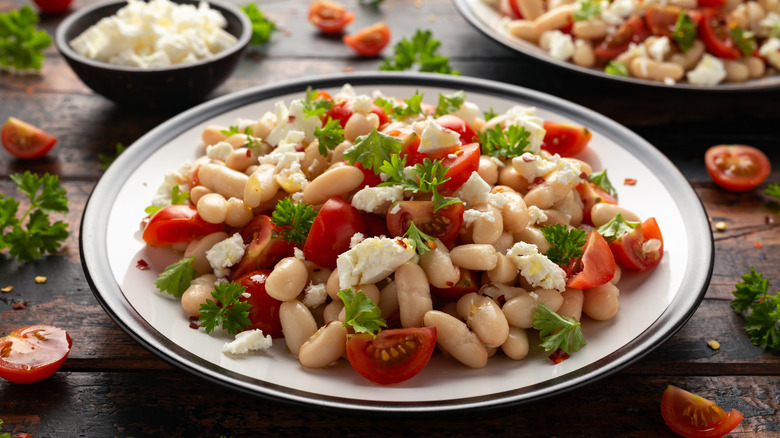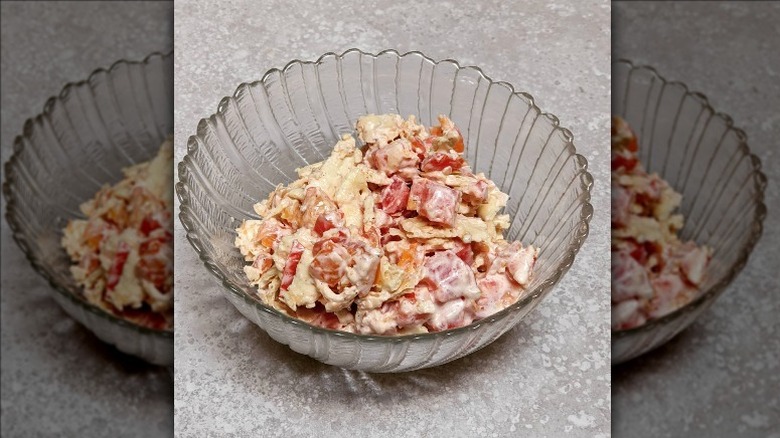12 Hacks For Your College's Salad Bar
It's the first week of college, and you step into the dining hall for the first time. Hordes of students line the periphery of the pizza station. Club sandwiches with mayo are being distributed to faculty members trying to squeeze in a bite between classes. All that's left of the sushi is the dried-up cucumber maki. Just as you're about to walk out feeling overwhelmed and unsatisfied by the remaining options, you witness a culinary bastion of simplicity: the salad bar. The greenery is refreshing. The toppings colorful. The dressings inviting. But there's only one problem: You don't know how to compose an appealing salad.
Learning how to properly utilize your college dining hall's salad bar can be a struggle, especially if you're not used to making your own salads at home. That's why we're sharing some of our favorite hacks to help make all of your salads filling, refreshing, and exciting. And hey, even if all of the other food in the dining hall is lackluster, you can still throw together a solid meal without worrying about making it to your next class on time. Here are a few college salad bar hacks you need to know.
Think about the flavor profile you want
First things first, you have to think about what you actually want from your salad. It's all too easy to start piling on every ingredient that looks good without a thought about what you will have in the end. This approach often leads to a salad loaded down with a ton of toppings that don't even go well together — not to mention soupy dressings that transform what should be a salad into chowder.
For that reason, it is important to have a flavor profile in mind when you start to make your salad. Do you want something creamy and salty like a Caesar dressing? If that's the case, you likely won't want to add a ton of tomatoes, bell peppers, or other watery vegetables because they might give your salad a more refreshing taste than you're craving. On the other hand, adding nuts, fresh fruits, and dried berries may be the way to go if you want something on the sweeter side.
If you don't know what flavor profiles to go for, look at a few salad recipes for inspiration, then try to recreate them at your dining hall's salad bar. You may be surprised at what you can throw together.
Mix up your greens
Too many people think that they know what goes into a good salad, and they always reach for the same ingredients. One of the most ubiquitous salad ingredients at salad bars is the infamous iceberg lettuce, which Rock City Eats agrees is widely hated by many. Of course, if you love iceberg lettuce, grab as much of it as you want. But if you are looking to change up your salad game, try using other leafy greens. And, if you are hesitant to put a plain handful of spinach on your plate, think about combining some of the different greens available.
Not only will mixing and matching leafy greens give you a wider variety of nutrients — after all, not all salad greens are designed the same, according to Everyday Health — but it will also offer you a wide variety of flavors. Spinach, for instance, has a subtle flavor, kale is stronger, and arugula will give your salad a nice spiciness. Kale and green leaf lettuce, spinach and chard, mesclun and radicchio ... the possibilities are endless. Branch out and try something new!
Bring your own ingredients
Some college salad bars are fantastic and offer all the toppings your veggie-loving heart could ever desire. Unfortunately, not all salad bars are created equally. If your college's salad bar leaves you feeling disappointed, you may still be able to doctor your salad to meet your expectations — it might just involve bringing your own ingredients. This is a great move when you're tired of what the salad bar offers.
Seeds can add a much-needed crunch to a bland salad, or you could add your favorite seasonings. Even a jar of "salad seasoning" from the grocery store will give your salad a kick. Keep them stashed in your backpack so you're always covered.
An alternative to croutons that have likely gone stale, chips are also easy to transport and offer a burst of flavor and crunch that will keep you going back to the salad bar for more. And fish sauce can provide a burst of umami flavor if the dressings at your dining hall aren't up to snuff. Don't be afraid to bring other ingredients as well. Have some leftover strawberries or blueberries that are about to go bad? Add them to your salad bar bowl, and you'll have something a bit more exciting.
Don't limit yourself to the salad bar
Most college dining halls have a wide variety of options to choose from, from Chinese-American food to pizza to burgers and fries. While the salad bar might be in its own station, you're not limited to the toppings you find there to make the kind of salad you're craving. Explore other areas of the dining hall and take advantage of dishes or ingredients that might pair well with your salad.
For example, if you're looking for something a bit more filling than the salad bar's grilled chicken strips, see if you can find chicken tenders in the dining hall. It's quick and easy to make a chicken tender salad that rivals any fast food joint. Look around for roasted veggies, too. They make an excellent addition to a salad when you're just not feeling the raw stuff, and it's one of our favorite ways to dress up salads during the winter months. And, don't forget about eggs: Whether you get them soft-boiled or fried, an egg or two adds a bit of extra protein and a lot of flavor to salads.
Try a fruit-based salad
When you first hear the word "salad," what comes to mind? If you immediately picture a big bowl full of leafy greens, you might want to rethink what a salad is actually all about. Salads can take all kinds of forms, and just because you're not feeling the greens doesn't mean you can't find some fresh produce that will satisfy your appetite. For example, why not try a fruit-based salad at your college dining hall's salad bar?
Many salad bars feature plenty of fruit, and you can easily build your salad around those options. Even if you have to go elsewhere in the dining hall to find the fruit you're looking for, berries, oranges, melons, and a variety of other fruits can serve as a deliciously sweet, refreshing, and juicy base for a salad. You can keep it simple and just opt for a plain fruit salad, but adding flavorful greens like arugula or herbs like parsley transforms a fruit salad into a savory dish. We think that salty, vinegar-based sauces work well — try a homemade basic vinaigrette — with these kinds of fruit-based salads, but don't be afraid to get creative and try something new.
Remember to use dressing on your salad
Too many of us have grown up with diet culture salads that are missing the most crucial element of all: the dressing. You may have been told that dressing is too fatty or high in calories, but we're here to tell you that you really should remember to use dressing on your salad, especially when you're getting one from your college dining hall's salad bar. According to a Purdue University study, fat-rich salad dressings actually help increase nutrient absorption. That means you'll get even more of the good stuff from those greens and veggies.
It's not just about health, either. Salad bars offer the chance to try many different salad dressings to see which ones you like best, so taste them all and you might just find a new favorite. Plus, when you get bored of eating the same old salad every day, switching to a different dressing can shake things up just enough to keep your meals interesting.
Don't be afraid to try new ingredients
When you're living with your parents, it's easy to eat the same old dishes and ingredients you have always enjoyed. Your parents might have made salads the same way your whole life, so now, when you head to the salad bar at the dining hall, you might gravitate toward the same ingredients you've always had in your salads. Of course, that's fine — there's nothing wrong with eating a meal that reminds you of home. But one of the best parts of college is spreading your wings and trying new things, and the salad bar is a non-threatening place to start.
Chances are, there are a ton of different toppings and additions you can choose from at the cafeteria's salad bar, so don't be afraid to try ingredients you've never tried in a salad before. Does the thought of adding nuts and cranberries to a salad make you curious? Sprinkle a bit on top of your usual order. Or perhaps you've never thought of eating your salad with steak instead of chicken. You may even want to see if you can throw together a vegan salad with tofu or tempeh that tastes just as good as the meat-centric salads you've enjoyed in the past.
As always, you don't have to like everything you try, but trying new ingredients is one of the best parts of your college dining hall. Take advantage of the diverse offerings and apply it to your salads.
Grains can make a more filling salad
Again, just because you're eating a salad doesn't mean that you have to resort to plain rabbit food and nothing else. If the thought of choking down a huge bowl of salad greens alone makes you want to opt for a pizza instead, know that you can start building your salad with grains. Quinoa is a fantastic base for salads, especially when you mix it with greens. Rice is also a good option if you're looking for something on the heartier side. And if you ask us, pasta is one of the best salad bases out there. It helps soak up all the extra dressing, and it's usually fantastic when paired with fresh veggies.
Beyond adding more to the taste, adding grains to your salad will also provide you with a more filling meal. It's a solid way to get your fruits and veggies without having to load up on raw broccoli, kale, and mushrooms alone. That extra bit of bulk might be just what you need to make it through that next class of the day.
Add plenty of protein
Sometimes, you want a salad that's nice and light and all about the fruits and veggies. Other times, though, you need something that feels a little more substantial. This is where proteins like meat, seafood, and vegetarian options come into play. Adding protein to your salads can bulk them up and make them more filling while adding a ton of flavor in the process. Luckily, it's especially easy to add protein to your dining hall salad because you have plenty of cooked protein options at your disposal.
If you don't eat meat or would just prefer a veggie-centric meal, you can add protein to your salad by sprinkling on the beans or adding some tofu to the mix, according to Insider. Many dining halls have a variety of other meat-free protein options like veggie patties and tempeh as well. Of course, you can indulge in meat if you prefer. Grilled chicken is always a safe bet, but don't be afraid to use shrimp or other types of seafood, steak, or even pulled pork if that's what you prefer and they're available. Bacon bits, ham, and other cold cuts are classics as well, and they are perfect for cold salads. Again, if you don't limit yourself to what you find at the salad bar, you have pretty much limitless options here.
Add plenty of herbs to your salad
Tired of eating bland, boring salads that seem to have no flavor? Chances are, greens or grains make up the bulk of most of your salads. If you want every bite to have even more flavor, make sure you add plenty of herbs to salads. Many college dining hall salad bars come equipped with a variety of herbs, so take advantage of them. If you want just a small touch of additional flavor, simply sprinkle them on top, or really pile them on when you want a more intense flavor. It may seem like overkill at first, but you're basically just adding more greens to your salad — they just taste different.
If you don't know where to start, opt for simpler herbs that you already know you like. Love parsley? A handful can take your quinoa and kale salad to a whole new level. Always down to add basil to your favorite foods? Chopped basil can transform an otherwise unremarkable bowl of chopped tomatoes. Herbs add nutrients (via Michigan State University) and color to your dish, but most importantly, they add a ton of flavor. Don't miss out on all they can do for your salad.
Make a bean salad
Not every salad has to look the same, and if you're still trying to get your veggies in, but the idea of another Caesar or cobb salad makes you want to cry, then you may want to really go off the rails and try something new. One idea we love? Making a bean salad. Bean salads are super filling, and you can use pretty much any beans your college's salad bar has on hand. Classic options include the trio of white beans, kidney beans, and green beans, but chickpeas, pinto beans, black beans, and soybeans can also make fantastic additions to a bean-heavy salad. Then, add whatever other toppings you want (we love adding lots of diced onion), and you have a veggie-forward dish guaranteed to fill you up.
Of course, just because beans are the base of this dish, that doesn't mean you have to forgo the greens entirely. Throwing a handful of shredded lettuce or arugula into your bean salad is a great way to get some more greens in and add an extra pop of freshness and flavor.
Add crackers to your salad
This one might sound strange if you haven't tried it before, but trust us — adding crackers to your salad is a hack you seriously need if you love carbs as much as we do. Crackers bulk up a salad when you're feeling extra hungry, and they add an extra level of crunch that's so enjoyable in a salad. Even if your college dining hall doesn't have any crackers on hand (though they probably do), you can easily bring some with you to give your salad a little something extra.
If you want to keep things really basic, you can simply crush up some saltine crackers and add them to some chopped tomatoes dressed with mayonnaise, as one Instagram user did. You don't have to stick to saltines, though. Oyster crackers and cheesy crackers make an excellent addition to all types of salads, and they soak up any of your extra dressing beautifully. You can even branch out even more. Why not add chips, pretzels, or other crunchy snack foods to your salads? It's one of the easiest ways to take your salad to the next level and prevent you from getting bored with the average cafeteria salad bar.
